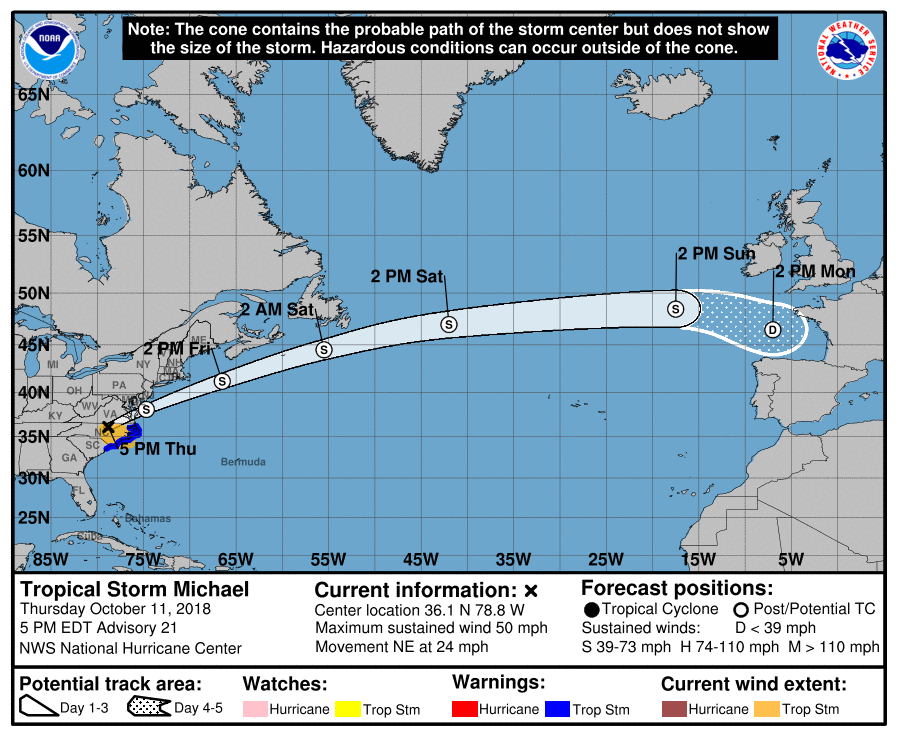
Michael was forecast to remain a tropical storm Thursday as it passes over Georgia, the Carolinas and even Virginia, bringing as much as a half a foot of rain to those states in a matter of days. The National Hurricane Center predicted that Michael would remain a hurricane until it hit central Georgia overnight. But the storm is so strong and it's moving so fast, it's likely to remain a hurricane further into Georgia than any storm since 1985, Masters said. Normally, when hurricanes hit land masses, they weaken. Michael is going to stay a hurricane even as it leaves the Gulf of Mexico. Michael was the most intense storm to hit the United States this late in the year by over a month, Masters said.ģ. What was abnormal was that system's interaction with a major hurricane. Each fall, low pressure systems moving west to east bring cool air to much of the United States. The cold front that collided with Michael was far from unusual. On the east side of the pressure trough, winds were moving south to north, blowing Michael north-northeast through the Panhandle and into Georgia and the Carolinas, Masters said. Throughout the week, a cold front embedded in a low pressure "trough" moving west to east across the United States ran into Michael as it made its way north through the Gulf of Mexico. The reason? Michael's late formation exposed it to the kind of weather system we'd normally see later in the year. Michael was moving north-northeast at a top speed of 16 miles per hour Wednesday - above average for a hurricane. A cold front pushed Michael north at an unusually high speed.

As a result, some parts of the state could see as much as a foot of rain from the storm, the National Hurricane Center said Wednesday.Ģ. The western Caribbean sea, where Michael formed over the weekend, just happens to be one of the hottest areas of the Atlantic Ocean. Warm water more easily turns into water vapor, and high temperatures add energy to a storm that keeps its winds raging at deadly speeds. The hotter an ocean is - and the deeper its warm water goes - the more intense a hurricane can get, Masters explained. Oceans supply storms like Michael with water vapor that later becomes high-intensity rain. INTERACTIVE: Track Hurricane Michael flooding in real timeĪs a rule, bodies of water are hurricane fuel. GROUND ZERO: 'We're broken here': Mexico Beach reels in the aftermath of Hurricane Michaelģ0 IMAGES: The Times eyewitness account to damage inflicted by Hurricane Michael after landfall TAMPA BAY TIMES COVERAGE: HURRICANE MICHAELĭAY ONE: Hurricane Michael thrashes Florida Panhandle with historic furyĭAY TWO: 'There are no words.' At least six dead as rescue crews search through Hurricane Michael's wrath But because Florida just had its hottest September on record, Masters said, Michael was able to feed off of a Gulf of Mexico that was 2 to 4 degrees hotter than usual on average. Normally, the seasonal transition from summer to fall causes oceans in the northern hemisphere to cool by October. Michael grew to be so fierce because it drew its strength from an unusually warm Gulf of Mexico, Masters said. Unseasonably warm Gulf of Mexico waters fueled the monster storm.


 0 kommentar(er)
0 kommentar(er)
